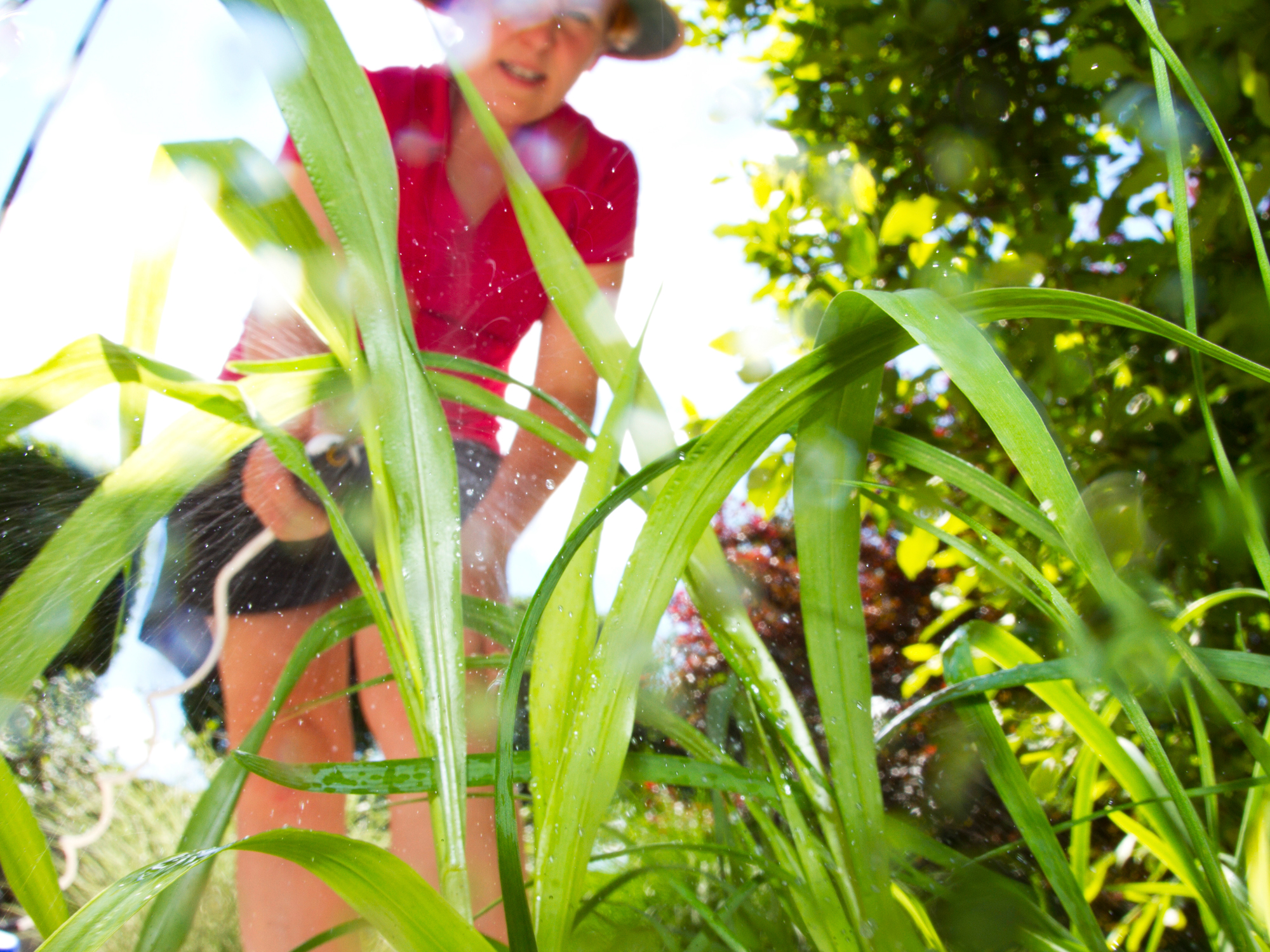Get Easy Health Digest™ in your inbox and don’t miss a thing when you subscribe today. Plus, get the free bonus report, Mother Nature’s Tips, Tricks and Remedies for Cholesterol, Blood Pressure & Blood Sugar as my way of saying welcome to the community!
The pesticide 1,000 times more toxic than we thought

Spring is upon us… which means pesticide season is too. It’s not long before your neighbors begin dousing their lawns in Roundup. And your city or town will also likely give the parks and public spaces a good spray of glyphosate-based herbicides, the most used pesticide worldwide.
That can make this time of year tough — especially if you like to spend time at the park or outside with your children or pets. Despite your best efforts, you can get stuck inhaling glyphosate fumes whether you want to or not.
If you mention your concerns to anyone, you’ll probably have at least a few people tell you not to worry… that low doses of glyphosate are safe. Whether or not these people are right is still a topic of hot debate.
But regardless whether glyphosate on its own is safe, there’s another factor a lot of people don’t think about — all of the other chemicals added to glyphosate pesticides.
You see, those glyphosate pesticides applied to lawns, parks and public spaces everywhere are mixed with a bunch of other chemicals that concoct a powerful pesticide cocktail.
Unfortunately, when safety studies are conducted on pesticides, researchers only test the safety of the active ingredient itself. They don’t test the dyes, anti-foaming agents, surfactants and other chemicals added to them.
What does that mean?
That means those pesticide studies that typically try to paint a rosier picture regardless — are likely giving us an even more inaccurate picture of how pesticides affect us in the real world. And that means that those so-called “safe” glyphosate-based pesticides could be even more toxic than most people think…
Added chemicals add to your glyphosate concerns
Because most of the ingredients used in these pesticides aren’t tested for safety, researchers from King’s College London are ringing alarm bells.
Sure, the active ingredients in pesticides (like glyphosate) are tested for possible health risks and an acceptable daily intake is set… but that’s not the case for adjuvants — the other chemicals added to pesticide formulas, including things like dyes, anti-foaming agents and surfactants.
“Exposure to environmental levels of some of these adjuvant mixtures can affect non-target organisms — and even can cause chronic human disease,” said Dr. Robin Mesnage from King’s College London, who co-wrote the research review. “Despite this, adjuvants are not currently subject to an acceptable daily intake and are not included in the health risk assessment of dietary exposures to pesticide residues.”
These researchers looked at available studies on pesticides used in agriculture and home gardens, focusing mostly on glyphosate-based pesticides, since those are the most popularly-used.
They came to the conclusion that testing glyphosate on its own is not good enough. There are so many glyphosate-based pesticide formulas in use today, and each one uses a unique mix of unregulated chemicals.
“Studies comparing the toxicity of commercial weed-killer formulations to that of glyphosate alone have shown that several formulations are up to 1,000 times more toxic than glyphosate on human cells. We believe that the adjuvants are responsible for this additional toxic effect,” said Dr. Mesnage.
Reducing your exposure
So you have good reason to be wary of the glyphosate-based pesticides everyone’s so fond of this time of year. And while you can’t avoid them drifting over from your neighbor’s yard or a nearby park, there are things you can do to reduce your overall exposure, like:
- Being picky about outside spaces. If you have a favorite park you visit regularly, check to see if they use pesticides. Most likely they do. A better bet may be visiting a local state park or protected area with natural woodlands free of pesticide dangers.
- Eating organic. One of the best ways to reduce your pesticide exposure is to avoid foods covered in them. Makes sense, right?
- Avoiding GMO-foods. They’re always doused with glyphosate. If you’re eating organic, this should be easy, since GMO foods can’t receive organic certification.
- Getting a water filter. Glyphosate runs off into many of our water sources, so investing in an activated carbon filter is a wise idea.
When all else fails, you always have the option to detoxify. Eating a healthy diet and drinking plenty of water is the best way to detoxify. You can also up your intake of detoxifying foods like cruciferous vegetables and foods rich in omega-3 fatty acids. These foods support your liver and encourage effective detoxification. Easy Health Options’ contributor Dr. Issac Eliaz also recommends you turn to medicinal mushrooms, seaweeds, sprouted whole grains and antioxidant-rich fruits and vegetables to promote better detoxification.
If you work with glyphosate or believe that you’ve been exposed to it in higher doses than most people, you may want to get your glyphosate levels tested. You can do that through a doctor or through The Detox Project.
Editor’s note: Have you heard of EDTA chelation therapy? It was developed originally to remove lead and other contaminants, including heavy metals, from the body. Its uses now run the gamut from varicose veins to circulation. Click here to discover Chelation: Natural Miracle for Protecting Your Heart and Enhancing Your Health!
Sources:
- Commercial pesticides not as safe as they seem — MedicalXpress. Retrieved March 16, 2018.
- Mesnage, et al. “Ignoring Adjuvant Toxicity Falsifies the Safety Profile of Commercial Pesticides.” — Frontiers in Public Health, 2018.
- 7 Steps to Minimize Your Exposure to Health Toxins — Rodale Wellness. Retrieved March 16, 2018.













